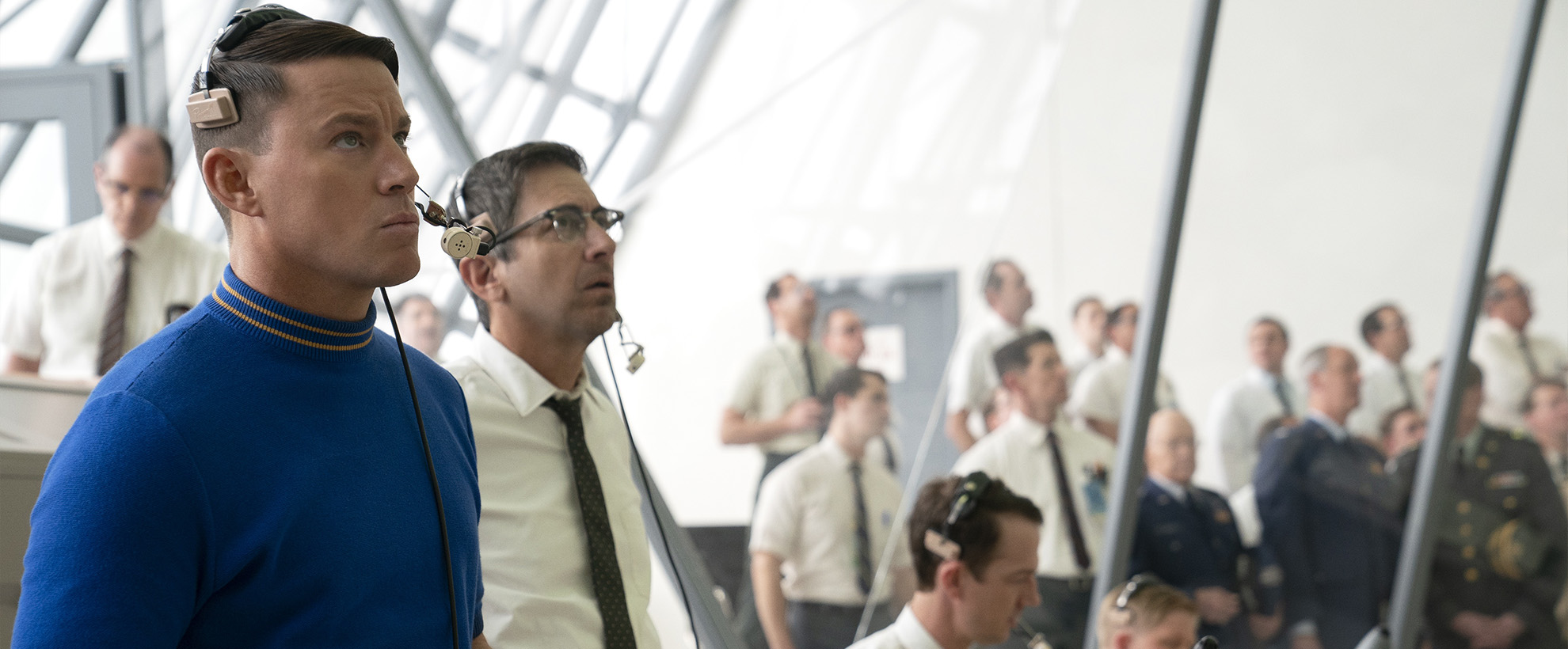
Fly Me to the Moon
Directed by Greg Berlanti, Fly Me to the Moon explores the tumultuous relationship between marketing specialist Kelly Jones (Scarlett Johansson) and straitlaced NASA launch director Cole Davis (Channing Tatum) during the historic 1960s space race. Tasked with boosting NASA’s image during the iconic Apollo 11 mission, Jones faces chaos when she clashes with the no-nonsense Davis, leading to a wild and unexpected backup plan: faking a moon landing.
Led by Visual Effects Supervisor Ben Loch, Framestore’s teams in London and Mumbai delivered approximately 100 shots, their work including background extensions, replacements, and augmentations for this heartwarming and visually stunning film.
“Framestore are no strangers to outer space, but more often than not we’re either dealing with the future or the here-and-now,” says VFX Supervisor Ben Loch. “Fly Me To The Moon gave us the opportunity to nerd out and dig right back into the early days of NASA to help establish the film’s historically accurate setting. We made use of archive material, blueprints and even vintage postcards to get the era’s look and feel just right, from interior design choices right down to the cars in the NASA parking lot."
The team’s work is infinitesimally detailed and shines through in every shot, whether it’s the ‘power of ten’ moment that highlights the huge scope and scale of the NASA site or blink-and-you’ll-miss them instances of period-specific digital set dressing
World Building NASA in the 1960s
With the film's central storyline set against the backdrop of the 1960s space race, our Environments team faced the challenge of authentically capturing the period look of NASA and its surroundings. "The client obtained historical footage of the launch and the period leading up to it, which served as a blueprint for recreating the launchpad environment and Merritt Island," says James Harmer, Lead Environment TD. "This footage provided detailed close-up views of the main structures, right down to sand deposits on the launch tower's metal framework." The team meticulously analysed this footage and compared it with modern-day helicopter shots to ensure accuracy. Additionally, they used NASA's 2020 lidar data to reference building positions, road layouts, and foliage patterns.
NASA's website was a goldmine for old schematics of key structures like the launch control building (aka the firing room), the launch tower, and the vehicle assembly building (VAB). "The firing room was fascinating to model with its distinctive large windows and protective shutters," states Harmer. The VAB, one of the world's largest buildings, was a major part of our environment build, covering eight acres of land and standing 525 feet tall and 518 feet wide. "To capture its massive scale, we meticulously matched the metal panelling on its surface.”
The environment team brilliantly blended past and present data to recreate the 1960s era with stunning authenticity.
Details, like the brightly-coloured cars (including a custom-designed Chevrolet Fifty-Seven), white service vans, large searchlights, and old-fashioned street lights brought the period to life. The team even modified the flood plains and surrounding water features to match their historical appearance. “The scale was a critical factor for us,” says Harmer. “So much of our work was driven by the sole objective of capturing the grandeur and enormity of NASA to the best of our abilities,” concludes Loch.
Saturn V: A Journey to the Moon & Back
Nailing the authenticity of the Saturn V launch was mission-critical to the film's plot. The team diligently researched and referenced high-resolution photos, information and restored footage from NASA to recreate every detail. “We even snapped photos of the disassembled Saturn V at the NASA Museum to perfect its exterior,” adds Loch. Over the years, the launch pad has seen many changes, especially with SpaceX's updates. “We had to strip away modern elements like glass buildings and launch towers from the footage,” says Harmer. “Back then, Launch Pad 39A was fairly new and Pad 39B had just been built, so we ensured they didn't look too worn.”




“Each Saturn V rocket and its LEM (Lunar Excursion Module) varied across missions, incorporating technological advancements to enhancing astronaut comfort, right down to external markings on the vehicles, so we had to be super-mindful about our references," says Lead Modeller Jason Edwards.
Apollo 11 was the most historical of all the Apollo missions, so it needed to be as accurate as we could make it in the given time.
"Modelling the cylindrical Saturn V rocket was straightforward, but the foil for the LEM was probably the most challenging. We used a mix of simulation and sculpting techniques for the model which was then handed to the Look-Dev team to work their magic on the final look. Reviving a historical era that no longer exists is never easy, but the crew did an outstanding job by the end of it.”
Four Seasons in Motion: Crafting the Perfect Timelapse
Reminiscent of a time-lapse shot, this sequence features Jones and Davis walking through a secret hangar, capturing the various construction stages of the Saturn V rocket. Multiple shots with different digidoubles performing various tasks were meticulously combined to create a seamless scene. “We organised the entire mocap shoot from start to finish for the digidoubles,” says Loch. Filmed on a TechnoDolly, the sequence showcases the rocket-building process's length, complexity and flexibility.
Being one of the most challenging sequences we worked on, this shot itself required approximately 100 days worth of Paint & Roto work to perfect.
From a lighting perspective, the team first matched the plate to enhance the 3D assets, addressing creative notes to continuously improve the shot. “The creative collaboration between Animation, Environments, Assets, and the Lighting Department made this sequence especially noteworthy and interesting to work on,” notes Alex Underwood, Lead Lighting TD.
Fly Me to the Moon is streaming now.


